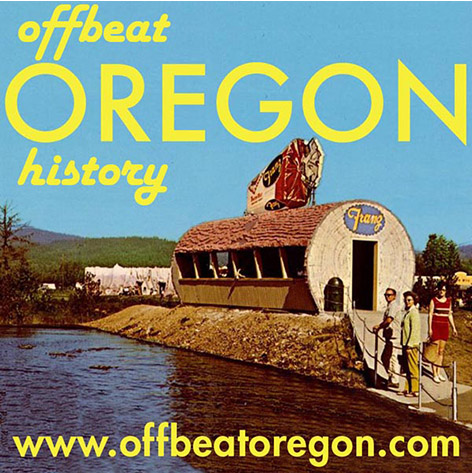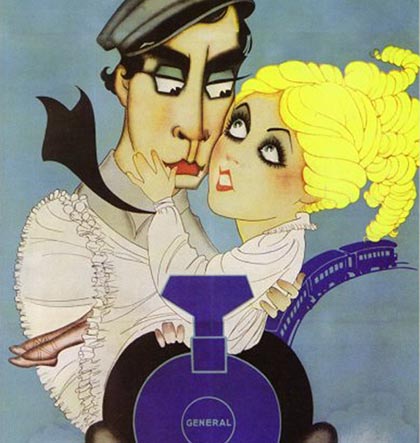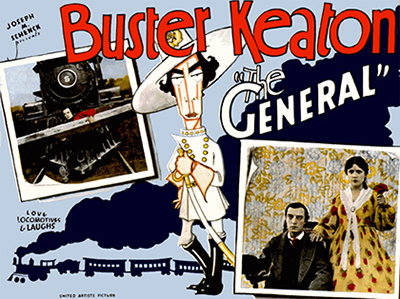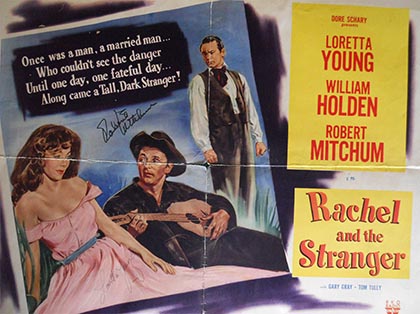CLATSOP, LANE, DESCHUTES, AND HOOD RIVER COUNTIES:
Iconic movies shot in Oregon, part 1: 1908-1952
Audio version: Download MP3 or use controls below:
|
3. Rachel and the Stranger (1948)
THIS FASCINATING FILM deals with some Old West topics that few movies want to touch — the experience of women, for one thing, and the indentured-servitude system of temporary enslavement. In the story, a widower moves out west in the late 1700s with his young son; deciding they need a woman around the house, he buys the contract of an indentured servant named Rachel. He marries Rachel so that people won’t think he’s “living in sin” with her, but he shows no romantic interest in her until a handsome stranger comes to the area and begins to woo her. There is, of course, an Indian attack along the way as well. Rachel and the Stranger was shot in the Springfield-Eugene area — at a stockade that the crew built along the McKenzie River, several scenic settings along the Mohawk, and at a rustic-farmhouse set built near Fox Hollow Road outside Eugene, among other spots. 4. Bend of the River (1952)
“BEND OF THERiver” is the first of two Westerns shot in Oregon featuring possibly the most universally beloved movie actor of all time: Jimmy “George Bailey” Stewart. It’s also adapted from a historical novel by the late Bill Gulick — a historian who, despite his unfortunate decision to hang his hat across the border in Walla Walla, ranks among the very best popular scholars of Oregon history. In this movie, set just after the Civil War, two gunfighters with checkered pasts are seeking a new start in a Westward-bound wagon train. When the wagons arrive in Oregon, they learn that a gold rush has broken out, and the man they bought their winter supplies from plans to renege on the deal, meaning the settlers will starve. The two men seize the food, fight off the supplier’s goon squads and head for the settlement. On the way, one of the two succumbs to the temptation to steal the food, and the other — Jimmy Stewart’s character — has to fight him to save the settlement. Portions of this movie were shot above timberline on Mount Hood, and a significant percentage of the movie was shot in Deschutes County. But arguably the most striking scenes in the film were the ones filmed on the Columbia and Sandy rivers — gorgeous scenes showcasing Mount Hood, Rooster Rock and Crown Point, and featuring a pair of working sternwheelers. In fact, the last steamboat race on the Columbia River took place in a promotion for this movie, when the sternwheelers Henderson and Portland charged up the river from Portland to Rooster Rock. (Both of these sternwheelers were designed as towboats, so neither one was built for speed; however, their skippers gave it their best. The Henderson won, but blew a gasket in the process.) Next, in Part Two of this three-part series, we’ll continue this survey of iconic pictures filmed in Oregon with the other Oregon-based Jimmy Stewart movie, “Shenandoah.”
|
Background photo is a postcard image showing vacationers enjoying Diamond Lake, circa 1955.
Scroll sideways to move the article aside for a better view.
Looking for more?
On our Sortable Master Directory you can search by keywords, locations, or historical timeframes. Hover your mouse over the headlines to read the first few paragraphs (or a summary of the story) in a pop-up box.
... or ...

©2008-2014 by Finn J.D. John. Copyright assertion does not apply to assets that are in the public domain or are used by permission.




